If there’s anything Mississippi has in abundance, it’s water bodies. The state is named after the Mississippi River, the second-largest drainage basin in the country. In addition to the many natural water bodies in the state, the United States Army Corps of Engineers and other organizations worked on several water projects in the late 19th and early 20th centuries to mitigate floods and build reservoirs for domestic water supply and recreational purposes. These projects created a good number of man-made reservoirs within the state.
Sardis Lake is the largest of these man-made lakes in Mississippi. Read on to discover interesting facts about Sardis Lake, such as its size, history, fishing, and the several other recreational activities it has to offer.
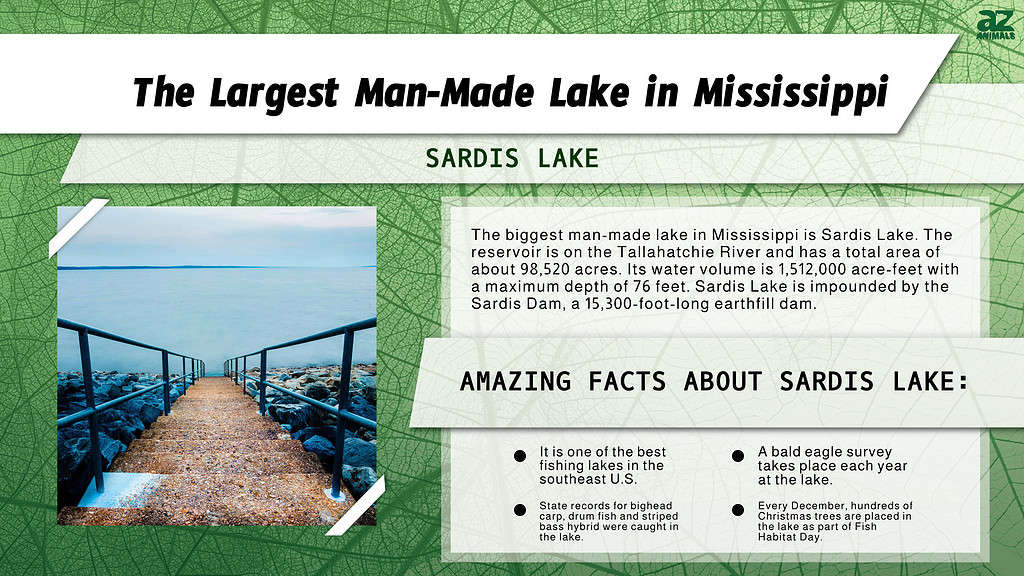
The Largest Man-Made Lake in Mississippi
Occupying a total area of about 98,520 acres, Sardis Lake is the largest man-made reservoir in Mississippi. This reservoir is on the Tallahatchie River and popular for its sandy beaches and fishing opportunities.
The lake’s water volume is 1,512,000 acre-feet with a maximum depth of 76 feet. Sardis Lake is impounded by the Sardis Dam, a 15,300-foot-long earthfill dam with an average height of 97 feet. The maximum height of this dam is 117 feet.
The 98,000-plus acres mentioned above refers to the total size of the lake and its surrounding areas. The lake’s recreation pool is about 32,500 acres. The massive lake has upper and lower areas.
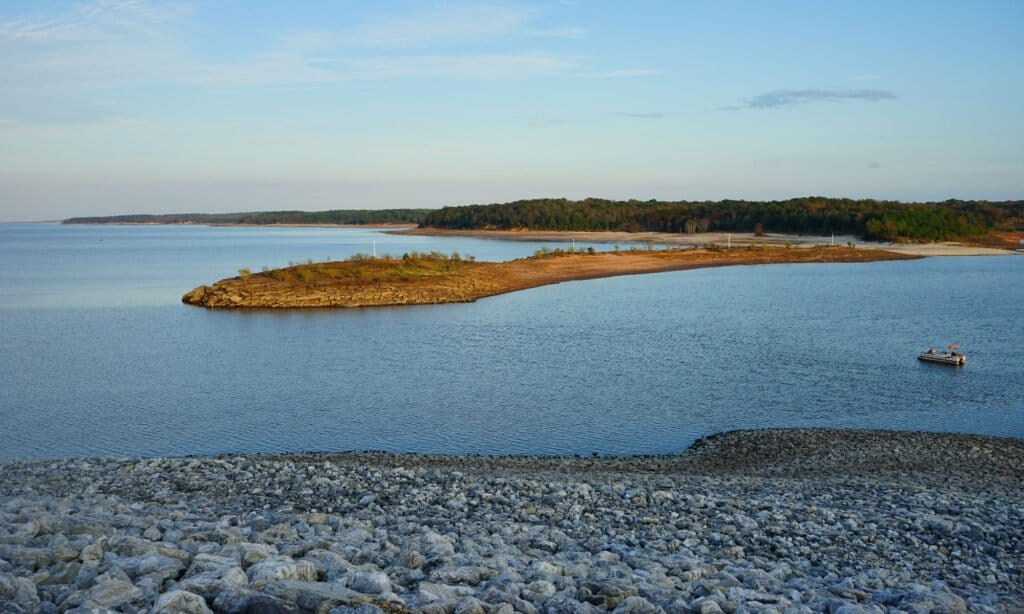
Sardis Lake is the largest man-made lake in Mississippi.
©Feng Cheng/Shutterstock.com
Where Is Sardis Lake Located on a Map?
Sardis Lake stretches across the borders of Lafayette, Panola, and Marshall counties. It is located more than nine miles southeast of the town of Sardis and about five miles north of Clayton. It’s around an hour’s drive from Memphis, Tennessee.
History of Sardis Lake
Sardis Lake was built primarily for flood prevention. Early in the spring of 1927, the United States was hit by one of the deadliest natural disasters in its history. That year, more than 23,000 square miles of land were flooded by the Mississippi River. The event is known as the Great Flood of 1927. The flood caused the loss of more than 250 lives and the destruction of some 750,000 homes and businesses.
After the disastrous flood, Congress established the Flood Control Acts of 1928 and 1936. These two statutes served as the basis for the effort to control the Mississippi River and its major tributaries. The construction of Sardis Lake was the first of four projects carried out by the U.S. Army Corps of Engineers to control the Mississippi. The others include Enid Lake, Arkabutla Lake, and Grenada Lake.
It took four years and a great deal of effort to clear 14 miles (23 km) along the Tallahatchie River as part of the preparation for the dam’s construction. The construction eventually started in the mid-1930s.
Since its creation, the dam has served its flood control purpose effectively. Only three times (1973, 1983, and 1991) has high water overtopped the emergency spillway since the dam went into operation. Sardis Lake has been preventing the Little Tallahatchie River from flooding the Mississippi Delta for almost 80 years.
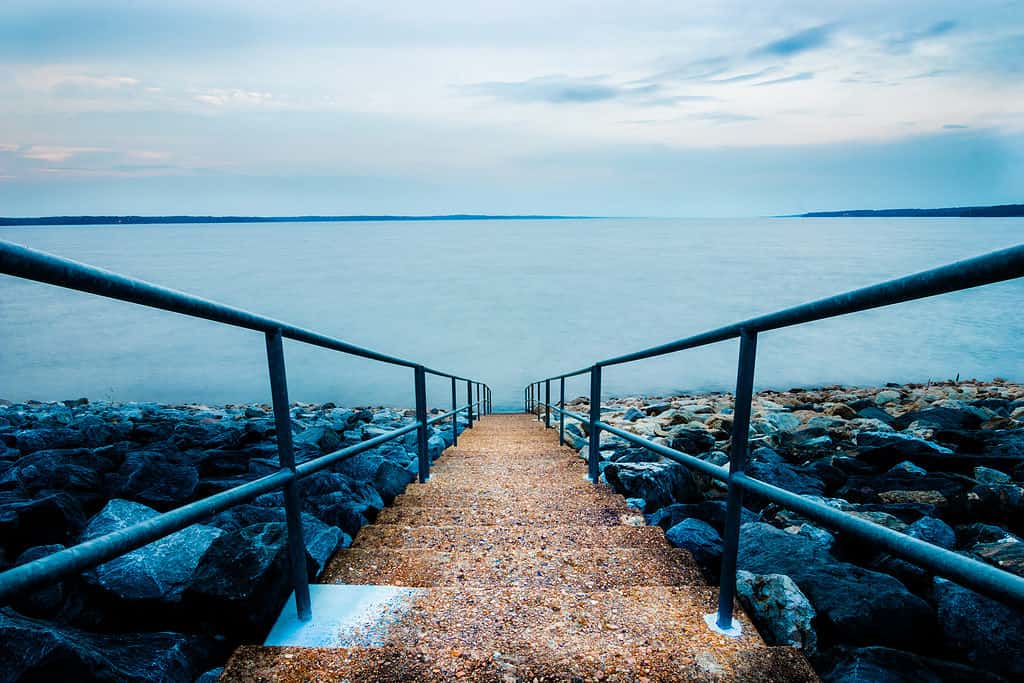
Sardis Lake was built following the Great Flood of 1927.
©Jordan Hill Photography/Shutterstock.com
Fishing in the Largest Man-Made Lake in Mississippi
Sardis Lake is one of the best fishing lakes in the southeast United States. Thousands of people from all over the country visit the lake annually for this purpose. Some of the most popular fish species one can catch in the lake include black crappie, largemouth bass, white crappie, spotted bass, redear sunfish, blue catfish, bluegill, and white bass. Additionally, fishing is permitted in all parts of the lake.
Many record-size fishes have been caught in Sardis Lake. In 2007, Ron Maxwell caught a 67-pound, 12-ounce bighead carp on the lake. The 2007 catch beats the existing record from the same lake by a close one pound! Mississippi’s state record for the largest drum fish was also caught on this lake. Bryan Christian caught the 29.85-pound fish in 2011. Another remarkable catch was the large striped bass hybrid that Robert Fulce caught in 1991. This was a 17.77-pound fish that also broke the state record.
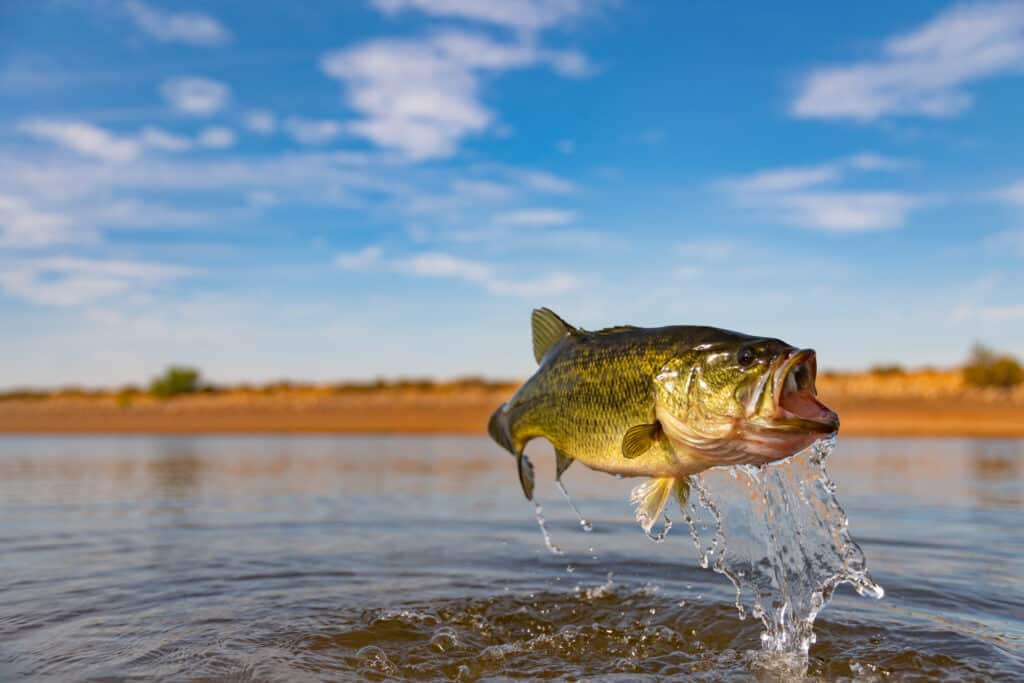
A wide ramge of fish call Sardis Lake home, including largemouth bass.
©Ryno Botha/Shutterstock.com
Recreational Activities at the Largest Man-Made Lake in Mississippi
Sardis Lake Marina is a must-visit for any visitor. The marina includes a dockage area, an on-water fueling station, and a waterfront restaurant. Guests also have access to the marina’s 140 docks, boat rentals, and a ship’s store.
Some day-use locations have been built around Sardis Lake to meet the needs of the lake’s ever-increasing number of visitors. This area includes a picnic table, pedestal grill, and service table.
After a relaxing dinner, guests can take advantage of the various adjacent facilities for various outdoor adventures. This includes playgrounds, hiking and bicycling routes, boat launching ramps, fishing areas, washrooms, beaches, and picnic pavilions.
Sardis Lake recreational area is a great place to camp, whether you’re an RV traveler or a tent camper. The lake’s administration takes care of the nine campgrounds across the lake, as well as the cottages and group camps. Facilities like restrooms, showers, boat ramps, sewage disposal systems, play areas, electricity, and water are available at the different campgrounds in the area.
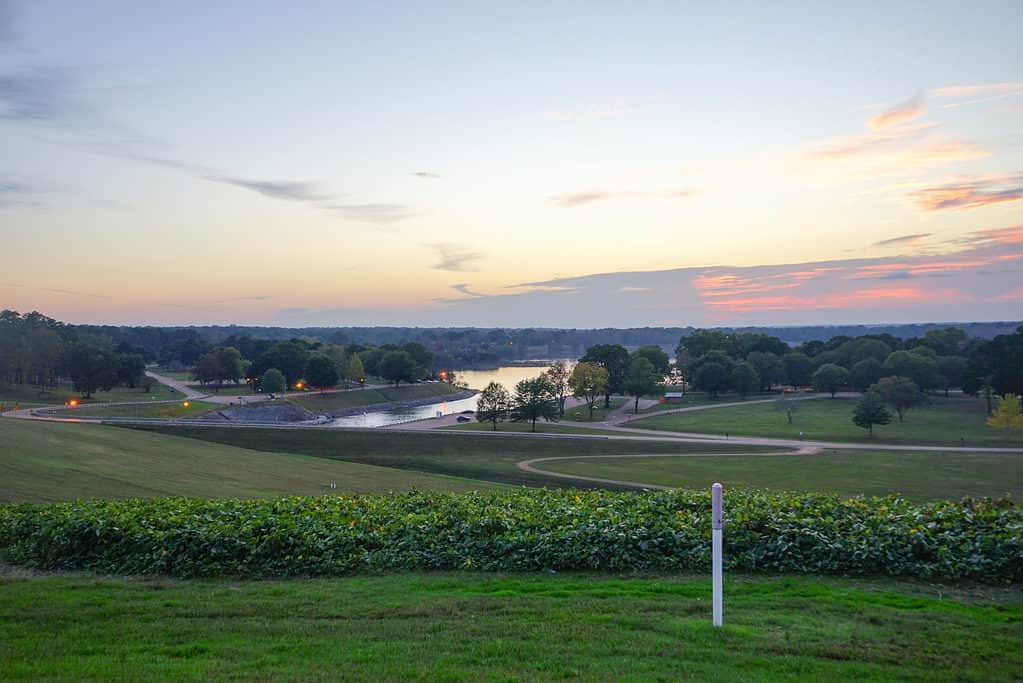
Recreational activities are an important part of the experience Sardis Lake offers its visitors.
©Feng Cheng/Shutterstock.com
Environmental Events at the Largest Man-Made Lake in Mississippi
The Sardis Lake Authority hosts some environmental events at different times of the year. The primary purpose of these events is to give people the opportunity to participate in protecting the environment. However, these programs are a great way to have fun, too. Some of these events include:
Annual Bald Eagle Survey
The first Bald Eagle Count event at Sardis Lake took place in 1982, and it has been an annual event ever since. During the event, volunteers gather at various locations across the lake to count the number of bald eagles in the area. The volunteers enjoy free lunches and t-shirts commemorating the event. This study helps the lake authority understand the number of eagles that visit Sardis Lake each year.
Fish Habitat Day
Volunteers and Sardis Lake employees get together every December when the lake is near the conservation pool level to put Christmas trees in the lake. Hundreds of Christmas trees are scattered about the lake by local companies, municipalities, and residents. When the lake level rises due to the spring rains, the trees provide much-needed habitat for numerous fish species.
The shelter provided by the tree protects spawning fish from predators. Fish Habitat Day and other such initiatives help the natural habitat to bounce back at a faster rate than it is lost. As a result, Sardis Lake is a more pleasant place for fish species to live and an ideal place to go fishing.
Clean Up Day
Every year, on the third Saturday in April, volunteers from all over the area gather at Sardis Lake to clean up the area. Students and community members from around the Sardis Lake region come together to pick up trash and clean up the environment. The festival has grown to become one of Sardis Lake’s most successful events of its kind. As a result of annual litter cleanup efforts, natural areas near the project have seen an increase in perceived quality.
Conclusion
For many years after construction, the Sardis Dam, which created the Sardis Lake, was the largest earth-fill dam in the world. Today, the lake still serves its original purpose of protecting the Mississippi from destructive floods. At the same time, the largest lake in Mississippi is a prime recreation destination for fishing and other interesting outdoor activities.
The photo featured at the top of this post is © Feng Cheng/Shutterstock.com
Thank you for reading! Have some feedback for us? Contact the AZ Animals editorial team.






